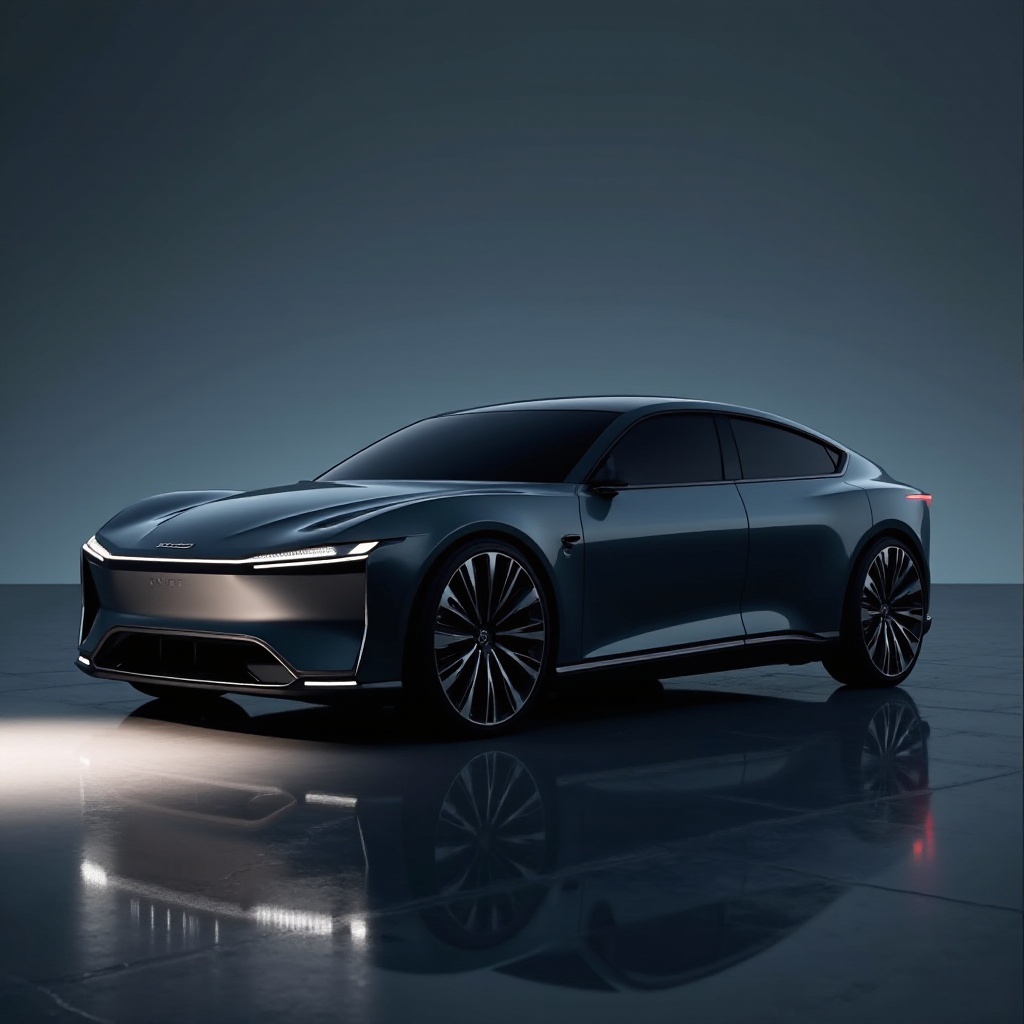Introduction
The automotive industry is undergoing a monumental shift with the rise of new energy vehicles (NEVs). This transition from traditional fuel-powered cars to electric and hybrid alternatives brings numerous advantages, but it also presents unique challenges. One such challenge is the loss of the distinctive sounds associated with internal combustion engines, which plays a significant role in both driver experience and pedestrian safety.
Enter the fratzonic chambered exhaust system, a cutting-edge technology designed to bring back the familiar roar of engines to NEVs. This article delves into the significance and workings of fratzonic chambered exhaust sound, its impact on NEVs, and the prospects of vehicle acoustic technology.

What is Fratzonic Chambered Exhaust?
Fratzonic chambered exhaust refers to an innovative new approach designed to project engine sounds in new energy vehicles. Traditional gasoline vehicles produce distinctive engine noises that not only enhance the driving experience but also serve as auditory cues for pedestrians and other drivers. As NEVs are inherently quieter due to their electric motors, this has led to concerns regarding road safety and loss of vehicle character.
The fratzonic chambered exhaust system addresses these concerns by recreating and amplifying synthetic engine sounds through an advanced audio technology positioned within the vehicle’s architecture. In essence, this system integrates various sound chambers and electronic apparatus to produce vibrant, engine-like acoustics. While it may mimic the classic engine noise, it does so in a controlled and customizable manner, offering car manufacturers the ability to fine-tune these sounds to align with brand aesthetics and safety requirements.
The Role of Sound in New Energy Vehicles
Sound plays an essential role in the driving experience and road safety. Beyond the aesthetic appeal of a roaring engine, the noise created by traditional internal combustion engines serves as an alert to pedestrians and other road users, indicating a vehicle’s proximity. The silent nature of NEVs, although advantageous from a noise pollution perspective, raises safety concerns, particularly for visually impaired pedestrians.
Additionally, the sound of an engine contributes to the visceral driving experience, offering feedback and engagement that drivers have come to expect. Without it, the sensation of driving might feel less thrilling. Therefore, incorporating a system like the fratzonic chambered exhaust ensures that NEVs can retain this auditory feedback, bridging the gap between silent efficiency and engaging driving.

How Fratzonic Chambered Exhaust Works
The fratzonic chambered exhaust system operates by combining acoustic technology with physical exhaust structures. Here’s a simplified breakdown of the process:
- Sound Generation: The system begins with the generation of synthetic sounds using onboard electronic modules. These modules are designed to replicate the harmonics and dynamics of traditional engines.
- Amplification: The next step involves amplifying these sounds. This is where the ‘chambered’ aspect comes into play. The sounds are directed through multiple chambers where they are acoustically refined. These chambers can be expressly designed to achieve specific sound characteristics.
- Emission: Unlike traditional exhaust systems that emit gases, the fratzonic chambered exhaust system emits this refined sound through strategically placed audio outlets around the vehicle’s periphery, usually around the rear or along the undercarriage to mimic typical engine placement.
The entire system is controlled via the vehicle’s onboard computer, which can adjust the sound profile based on driving conditions. For instance, the vehicle can produce a more aggressive sound during acceleration and a subtler, more relaxed noise while cruising.
Benefits of Fratzonic Chambered Exhaust in NEVs
The adoption of fratzonic chambered exhaust technology in NEVs comes with various advantages:
- Enhanced Safety: The generated sounds act as auditory signals for pedestrians and other road users, significantly mitigating the risk of accidents involving quiet-running NEVs.
- Improved Driving Experience: For many automotive enthusiasts, the sound of the engine is an integral part of their driving pleasure. Fratzonic chambered exhaust systems can recreate this experience, making the transition to NEVs more palatable.
- Customization: Manufacturers have the flexibility to design and implement unique sound profiles. This customization allows car brands to retain their characteristic auditory signature, which can also be a marketing advantage.
- Regulatory Compliance: As some regions mandate that electric cars produce minimum external sounds for safety reasons, fratzonic chambered exhaust systems can help manufacturers stay compliant with these regulations.
Overall, such systems blend the technological advancements of NEVs with the timeless appeal of traditional automotive sounds.

Case Studies and Industry Adoption
Several car manufacturers have already begun to integrate fratzonic chambered exhaust technology into their NEVs. For instance, Dodge has made significant strides with its Challenger electric concept, promising synthesized ‘muscle car’ roars. This approach has been praised for maintaining the brand’s signature sound while enhancing the auditory driving experience.
Another notable case is the adoption of this technology by Jaguar. For its I-PACE models, Jaguar has engineered soundscapes that echo the purr of a classic Jag, enhancing the emotional connection drivers have with their vehicles.
These pioneering efforts underscore the automotive industry’s commitment to preserving the auditory delight while advancing toward a sustainable future. Various industry reports and customer feedback indicate a positive reception, showcasing that fratzonic chambered exhaust sounds can bridge the gap between innovative NEV technology and traditional vehicle experience.
Future Trends in Vehicle Acoustic Technology
The fratzonic chambered exhaust system is just the beginning. The future of vehicle acoustic technology holds immense potential for innovation. Imminent trends include:
- AI Integration: Leveraging artificial intelligence to dynamically adjust sound profiles in real time based on driving conditions, driver preferences, and environmental factors.
- Multi-Frequency Chambers: Developing exhaust systems with multiple frequency chambers for a richer, more diverse sound palette.
- Enhanced Personalization: Providing drivers with apps or interfaces to customize their car’s sound profile, making each driving experience uniquely their own.
As the automotive world continues to evolve, so will the integration of sound, making driving both pleasurable and safe in a modern context.
Conclusion
From enhancing safety to enriching the driving experience, fratzonic chambered exhaust technology is pivotal in the evolution of NEVs. As auto manufacturers continue to innovate, the fusion of cutting-edge acoustics and traditional vehicle audibility underscores an exciting future for the automotive industry.
Frequently Asked Questions
How does fratzonic chambered exhaust sound enhance safety in electric vehicles?
The system generates synthetic engine sounds, alerting pedestrians and other road users to the vehicle’s presence, thereby reducing the risk of accidents associated with the near-silent operation of electric vehicles.
What are the environmental impacts of fratzonic chambered exhaust in NEVs?
As it is an acoustic technology, fratzonic chambered exhaust systems do not produce harmful emissions. They blend seamlessly with the green credentials of NEVs, making them environmentally friendly.
Which car manufacturers are leading in the use of fratzonic chambered exhaust technology?
Manufacturers like Dodge and Jaguar are at the forefront of integrating fratzonic chambered exhaust technology. They are pioneering initiatives to maintain signature auditory experiences in their electric vehicle models.
